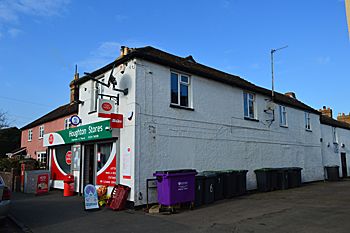35 High Street Houghton Conquest

Houghton Stores - 35 High Street February 2016
Houghton Stores was originally a bakery. In 1849 Charles and William Armstrong sold a two properties in Houghton Conquest to their occupier Thomas Bunker [Z1265/8/2]. The house was described as having been built by the Charles and William's father, John on ground "in front" of a property which was now a bakehouse but had previously been a cottage occupied by William Young, then henry Seabrook before being converted into a parish workhouse. Every parish had its own small workhouse for the homeless poor but Houghton Conquest may have had two, as there is also evidence of a workhouse in Rectory Lane. With the passing of the Poor Law Amendment Act in 1834 parish workhouses became redundant as rural parishes were grouped into Poor Law Unions and sent their homeless poor to large workhouses in a nearby town - in the case of Houghton Conquest this meant Ampthill. Both properties stood on 1 acre, 3 roods, 27 poles of ground called Workhouse Close.
In 1868 Thomas Bunker sold the bakehouse and cottage to Samuel Francis of Houghton Conquest, farmer, for £700 [Z1265/8/3]. Bunker had built four cottages on Workhouse Close and also sold two other cottages, again built by John Armstrong. By 1875 Francis had built ten cottages on the close - today's Albert Place [Z1265/8/5]. By 1950 1 to 10 Albert Place were owned by Florence Elizabeth, wife of Richard Smith [Z1265/8/7].
The Rating and Valuation Act 1925 specified that every building and piece of land in the country was to be assessed to determine its rateable value. The valuer visiting the premises discovered that it was a bakery owned and occupied by Mrs Francis. He noted: “All frontage. Right on road two sides”.
Three reception rooms, a kitchen and scullery were downstairs with five bedrooms above. The bakehouse stood outside; it measured 13 feet by 12 feet and had a nine bushel oven, there was a flour store on the floor above. Also outside were a wood and coal barn and a coachhouse with a store over. There was also a glasshouse for growing fruit. The valuer considered it “Very good accommodation” and noted the “Lovely flowers”. Peter rancis is recorded as a baker in Houghton Conquest in Kelly's Directory for 1914 so Mrs Francis was probably his widow. The post office at this date was further along the High Street, more or less on the site of today’s Village Hall.